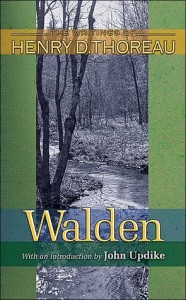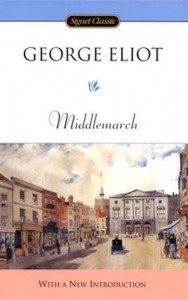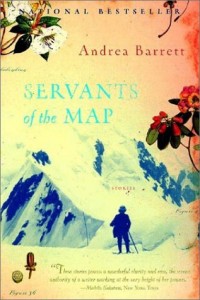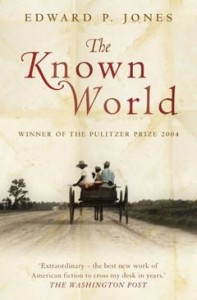I could recommend hundreds of books, but here are some of the books and writers whose work I truly love.
Childhood:
 Like so many women of my generation, as a child I adored the Little House books by Laura Ingalls Wilder. Laura was such a likeable character: playful, fearless, imperfect. Her incredible childhood adventures were absolutely compelling. When I picked up these books again as an adult to read them with my girls, I found Wilder was every bit as good a writer as I had remembered. The books, especially the first few in the series, are rich in specific detail about everything from butchering time (who could forget the children playing catch with a blown-up bladder?) to how to shake a plum tree. The fact that Wilder’s father’s claims to native land don’t stand up is an opportunity to talk about American Indian history with children today.
Like so many women of my generation, as a child I adored the Little House books by Laura Ingalls Wilder. Laura was such a likeable character: playful, fearless, imperfect. Her incredible childhood adventures were absolutely compelling. When I picked up these books again as an adult to read them with my girls, I found Wilder was every bit as good a writer as I had remembered. The books, especially the first few in the series, are rich in specific detail about everything from butchering time (who could forget the children playing catch with a blown-up bladder?) to how to shake a plum tree. The fact that Wilder’s father’s claims to native land don’t stand up is an opportunity to talk about American Indian history with children today.
Little Women is another childhood favorite of girls, and I was no exception. Again, Louisa May Alcott’s heroine is brave and bold beyond her time—and she becomes a successful writer, something I always dreamed of myself. I know this book has been criticized for its sentimentality, and even Alcott herself was not eager to write it, but the fact that it has influenced so many girls for more than a hundred years speaks to its ability to touch something in us across the generations. I still love it.
I remember buying my paperback edition of Esther Forbes’s Johnny Tremain in the summer before fifth grade. Our school reading group was going to read it together, and we were asked to buy our own copies. It was one of the first “chapter books” I owned, and buying it new was a thrill, since many of my other books were hand-me-downs. I loved this adventurous story of a Revolutionary War-era silversmith’s apprentice.
The Classics:
 I read excerpts from Henry David Thoreau’s Walden at exactly the right time, in the spring of my sophomore year of college when everything he said rang absolutely true to me. I returned to the book again as a high school teacher, and was surprised to find that my high school sophomores responded better to Thoreau and Emerson than to almost any other writer we read, despite the difficulty of the prose. A few years ago, I read Walden from start to finish for the first time, and while I read Thoreau now with a more jaded eye, I still love this soaring book. In fact, I confess I have a little bit of a crush on Mr. Thoreau, which resulted in my short story “Waking the Neighbors Up.”
I read excerpts from Henry David Thoreau’s Walden at exactly the right time, in the spring of my sophomore year of college when everything he said rang absolutely true to me. I returned to the book again as a high school teacher, and was surprised to find that my high school sophomores responded better to Thoreau and Emerson than to almost any other writer we read, despite the difficulty of the prose. A few years ago, I read Walden from start to finish for the first time, and while I read Thoreau now with a more jaded eye, I still love this soaring book. In fact, I confess I have a little bit of a crush on Mr. Thoreau, which resulted in my short story “Waking the Neighbors Up.”
I got “stuck” with a semester-long seminar on the poetry of Emily Dickinson in the spring of my senior year of college. I dreaded that class, but it turned out to be one of the best courses I ever took. For one thing, we had the luxury of reading deeply, not broadly. I now believe that the tendency toward breadth over depth is one of the greatest flaws in our educational system. My Dickinson class taught me not only to love and appreciate Dickinson’s poetry, but to be a better reader of poetry in general. Emily Dickinson was so far ahead of her time I’m not sure we’ve caught up with her yet. I especially like her poems “If you were coming in the Fall,” “Wild Nights” and “There’s a certain Slant of light,” though I won’t pretend to have read more than a fraction of her complete works.
I don’t remember when I first read John Steinbeck’s The Grapes of Wrath, but I taught it in my sophomore honors class when I was a high school teacher. The students found it a struggle, and I’ll admit the whole turtle in the road thing makes for a slow start. But Steinbeck brings us into the experience of the Dust Bowl with such attention to detail and with such compassion for his characters that it’s hard to leave this novel feeling untouched by it. The final scene is brave and like nothing else I can think of in modern literature.
I first read Arthur Miller in high school; his play All My Sons struck a chord with me, perhaps because I had heard my father speak many times of his cousin killed in World War II. But my favorite Miller play is The Crucible. Its movement from one scene to the next and its building of tension is nearly flawless. The 1996 film with Daniel Day-Lewis is a great adaptation; Miller himself wrote the screenplay.
I’ve seen many mediocre and even awful productions of Shakespeare’s plays. But I was incredibly fortunate to have tickets to see the Royal Shakespeare Company in Newcastle-on-Tyne during my junior year of college, which I spent at Durham University in northern England. That season they performed Macbeth, Romeo and Juliet, and A Midsummer Night’s Dream. That was the year I learned to really appreciate Shakespeare. It wasn’t until I had seen truly great performances of his work on stage that I could hear its poetry when I read it on the page. I’m partial to Kenneth Branagh’s films, particularly Much Ado About Nothing, but there is nothing like an excellent live performance of Shakespeare.
 For a deeply satisfying, multilayered 19th-century novel, my favorite is George Eliot’s Middlemarch. The story of Dorothea Brooke’s marriage to the disappointing and manipulative Edward Casaubon is movingly universal, but there is so much more to this novel– many wonderful interwoven threads which shift between comedy and tragedy and tell the tale of an entire town and its many colorful characters. This really is a novel to fall into and get lost in.
For a deeply satisfying, multilayered 19th-century novel, my favorite is George Eliot’s Middlemarch. The story of Dorothea Brooke’s marriage to the disappointing and manipulative Edward Casaubon is movingly universal, but there is so much more to this novel– many wonderful interwoven threads which shift between comedy and tragedy and tell the tale of an entire town and its many colorful characters. This really is a novel to fall into and get lost in.
Contemporary Fiction:
Toni Morrison blew me away with Beloved. Her command of voice and time and story in that novel is unprecedented. It should be hard to follow, but the jostling experience of the novel feels exactly right, like the jostling of a wagon on a rutted dirt road. Instead of being tossed out of the story by its disconnects, it is as if we are shaken deeper into it, until we come to the moment of understanding exactly why Sethe does what she does. This novel is devastating and I don’t necessarily want to read it again, but it left me breathless as so very few novels do. It has quite deservedly been called the greatest American novel of the late 20th century.
Gilead by Marilynne Robinson is such a quiet novel that a lot of readers find it difficult to read. But the voice of John Ames is so familiar, so sympathetic, and so true that I was happy to sit and ruminate with him for as long as he was willing to speak. In fact, when plot does intrude on the story it feels a little bit like that—an intrusion. I am a PK, a preacher’s kid, so what I loved most about this novel was its sincere, generous, honest portrayal of a minister. Ames defies all the boring stereotypes of the hypocritical, blind, strict minister (think every ministerial character from Arthur Dimmesdale of The Scarlet Letter to the father in the movie Footloose) to become the truest character of a minister I have ever read.
Nicole Krauss’s The History of Love is probably my favorite book of the last decade. I picked it up on a whim in the Seattle airport, needing something to read on a long flight home–one of those serendipitous right book/right time finds. In fairness, I’ll observe that having a four-hour, uninterrupted block of time to sink into a book is a luxury for me, and it’s just what we need as readers to give every book a chance to entrance us. But I think I would have loved this book even without that gift of time. Just when you think you know where this novel is going, it takes an unexpected turn, and it’s impossible not to care about Alma and Leo and the book that connects them. I can’t wait to read Krauss’s Great House.
 Andrea Barrett is my favorite writer of historical fiction today. She is well-versed in science, and since I am not, this makes the rich scientific detail in her novels and stories all the more fascinating to me. My favorite Barrett story is “Servants of the Map,” which appears in her collection of the same name, but everything by Andrea Barrett is well worth reading.
Andrea Barrett is my favorite writer of historical fiction today. She is well-versed in science, and since I am not, this makes the rich scientific detail in her novels and stories all the more fascinating to me. My favorite Barrett story is “Servants of the Map,” which appears in her collection of the same name, but everything by Andrea Barrett is well worth reading.
As short stories go, Alice Munro is, of course, the queen. I don’t know how she gets away with it. She writes stories that break the rules and make you wonder why we ever had those rules in the first place. Open Secrets is my favorite of her collections, and I’m especially partial to the stories I’ve taught: “The Albanian Virgin” and “Carried Away.” Teaching a story, for me, is the ultimate test of its strength—will it hold up to close scrutiny, or will it fall apart, leaving us nothing to say? Munro’s stories continued to reveal something new to me year after year.
Everything by Margaret Atwood is also worth reading, as far as I’m concerned, but Alias Grace tops my list of Atwood’s fiction. Paced like a 19th-century novel, it takes its own luxurious time to tell the story of Grace Marks, who may or may not be a murderer. The book is not your traditional cliffhanger, but I couldn’t put it down. Atwood is that good.
 The Known World by Edward P. Jones does, indeed, create a world. Jones paints a constellation of characters, every one of whom is as interesting and engaging as the next, and while he’s telling us their stories, he’s also questioning the way in which stories are told to us and what we think we know. He’s a masterful storyteller who never lets his reader get too comfortable.
The Known World by Edward P. Jones does, indeed, create a world. Jones paints a constellation of characters, every one of whom is as interesting and engaging as the next, and while he’s telling us their stories, he’s also questioning the way in which stories are told to us and what we think we know. He’s a masterful storyteller who never lets his reader get too comfortable.
The entire first section of Ian McEwan’s Atonement takes place in one evening, and the pace is at once leisurely and tense. We get the story of that one evening from multiple perspectives, all of them woven together, so that by the end we understand without question why each character has behaved or reacted to a tragic situation as he or she has. Then, just as the reader is wondering where McEwan can possibly go from there, it’s as if we begin an entirely different novel, another scene set on another single day with the same sort of pacing but very different setting and action, and the excitement begins all over again as we follow the consequences of what has occurred in the beginning of the novel.
Contemporary Non-Fiction:
I read quite a bit less non-fiction than fiction, though I find it strange when readers say they “don’t like non-fiction.” Non-fiction covers everything! What interests you? Here are a few of my favorites from the last decade.
I’m interested in environmental issues; on that front, I’ve taken a lot from Michael Pollan’s In Defense of Food and Barbara Kingsolver’s Animal, Vegetable, Miracle. I’m also interested in religion, and particularly the need for more understanding and cooperation among people of different faiths. I still think about The Faith Club by Ranya Idliby, Suzanne Oliver and Priscilla Warner, though I read it several years ago. Thich Nhat Hanh’s Living Buddha, Living Christ is a wonderful book that draws connections between Christianity and Buddhism.
I’m also interested in filling in gaps in my knowledge of history (there are many). In our mother-daughter book group, my daughter and I recently read Red Scarf Girl by Ji-Li Jiang, a memoir of China’s Cultural Revolution. Closer to home, I learned a lot about the revolutionary generation from Joseph J. Ellis’s Founding Brothers. In the related genre of biography, I enjoyed John Matteson’s Eden’s Outcasts, a dual biography of Louisa May Alcott and her father Bronson Alcott; and Harriet Beecher Stowe: A Life by Joan D. Hedrick, especially recommended for any woman trying to write and raise children at the same time.
And, of course, there are all those books about writing. How to Become a Famous Writer Before You’re Dead by Ariel Gore sounds irreverent, and Gore definitely has an edge, but her advice is not only funny, it’s entirely sound and sincere.
